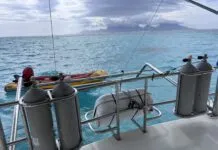
Being out in the ocean means you are going to have to deal with whatever the weather sends your way. It also means you will be out of range of rescue services. The boat must be self-reliant and, as near as possible, unstoppable. So how will she fare when thing get gnarly? In order to survive, a boat must do a few things. She needs to keep as much water out as possible and pump out what does get in. She needs to be able to steer a course, she needs to stay upright and she needs to support a crew. So how do we make sure she does that?
To continue reading this article or issue you must be a paid member. Sign in
Join Practical Sailor
Get full access to Practical-Sailor.com – more than 4,000 articles – for just $34.
Join today and save 42% off our full price.

































What – not even a mention of wind vanes in lieu of or as a complement to autopilots that require electrical/hydraulic systems (added failure points)? Many smaller sailboats can’t afford the power consumption nor the space consumption of a robust autopilot system.
I can’t cover everything. I agree that wind vanes still have a place on smaller boats. The average cruising boat is now about 40ft and has enough power to run an autopilot. They also don’t do well downwind, are expensive, and require quite a bit of skill to get them to work well. I think this puts them in the ‘specialist’ realm. To do the topic justice, it would need its own article. I am including a chapter on windvanes in my book which will hopefully be out later this year.
“a cockpit well 6-ft. x 4-ft. x 1.5-ft deep will hold 36 cubic feet of water. That weighs about 3 tons!”
No, that much water would weigh a little over 1 ton.
Oops, you are right, I made a mistake in the maths. The principle is the same even 1ton of water on the stern will do horrible things to the boats trim
Which doesn’t negate the author’s point…